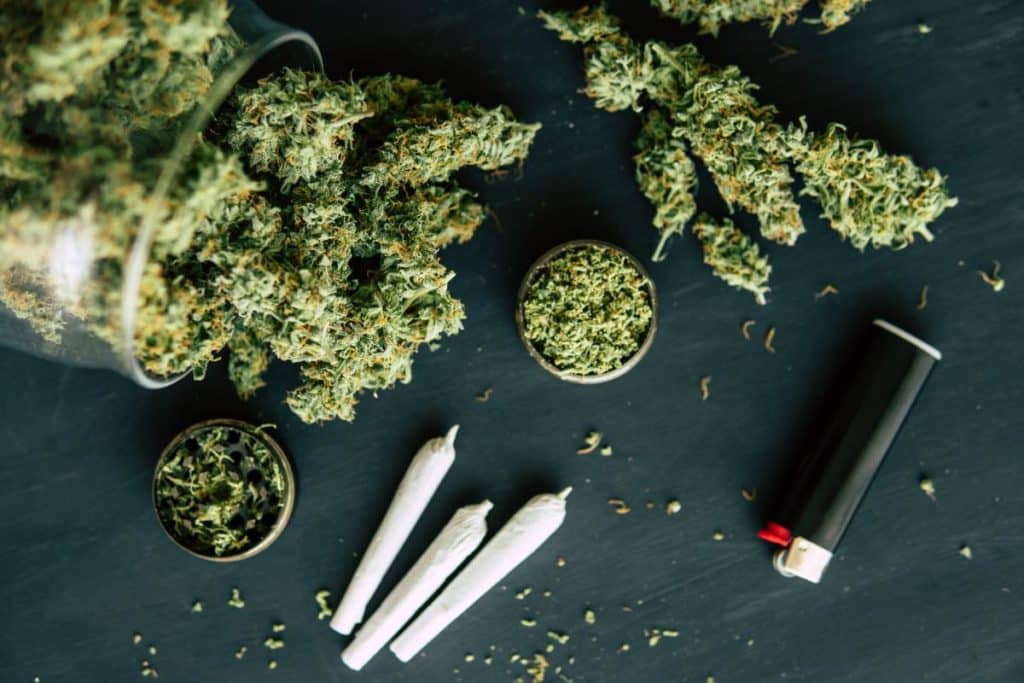Marijuana, derived from the Cannabis plant, has been used for medicinal and recreational purposes for thousands of years. As legal access expands in many states, it’s crucial to understand the different types of marijuana and their effects. This article explores the key differences between indica and sativa strains, their potential uses, and the risks associated with marijuana use.
Botany and Origins of Marijuana
Cannabis indica and Cannabis sativa are the two main subspecies of the Cannabis plant, though most modern strains are hybrids of the two.
Indica:
- Originally from the Hindu Kush mountains in Central Asia
- Shorter, bushier plants with wider leaves
- Typically higher in CBD content
- Adapted to harsh, dry climates with short growing seasons
Sativa:
- Native to equatorial regions like Southeast Asia and Central America
- Taller plants with narrower leaves
- Generally higher in THC content
- Evolved in warm, humid climates with longer growing seasons
Chemical Composition of Marijuana
The effects of marijuana are primarily due to compounds called cannabinoids. While over 100 cannabinoids have been identified, the two most prominent and well-studied are:
- THC (tetrahydrocannabinol): Responsible for the “high” associated with marijuana use. THC interacts with the brain’s endocannabinoid system, affecting mood, perception, and cognition.
- CBD (cannabidiol): Non-intoxicating, associated with potential therapeutic effects. CBD may modulate the effects of THC and has anti-inflammatory properties.
Indica strains often have a higher CBD:THC ratio, while sativa strains typically have more THC relative to CBD. However, selective breeding has led to wide variations in cannabinoid profiles across both types.
Terpenes
In addition to cannabinoids, marijuana contains terpenes, aromatic compounds that contribute to the plant’s smell and taste. Some common terpenes include:
- Myrcene: Often associated with relaxing effects
- Limonene: May have mood-elevating properties
- Pinene: Potentially improves alertness and memory
- Linalool: Possibly anxiolytic and sedating
The combination of cannabinoids and terpenes contributes to what’s known as the “entourage effect,” where these compounds work synergistically to produce the overall effects of a particular strain.
Consumption Methods of Marijuana
Marijuana is consumed in various ways, each with its own onset time and duration of effects:
- Smoking: Rapid onset (within minutes), effects last 1-3 hours
- Vaporizing: Similar to smoking, but potentially less harmful to the lungs
- Edibles: Slower onset (30 minutes to 2 hours), longer-lasting effects (4-6 hours or more)
- Oils and tinctures: Can be taken sublingually for faster absorption or added to food
- Topicals: Applied to the skin, primarily for localized effects without psychoactivity
Risks and Concerns
While some tout marijuana as harmless, its use carries several risks:
Addiction and Dependence
Contrary to popular belief, marijuana can be addictive. Regular use may lead to Cannabis Use Disorder, characterized by:
- Difficulty controlling use
- Continued use despite negative consequences
- Development of tolerance
- Experiencing withdrawal symptoms when stopping use
According to the National Institute on Drug Abuse, about 30% of marijuana users may have some degree of marijuana use disorder.
Mental Health Risks
High-THC marijuana use has been linked to:
- Increased risk of psychosis, particularly in individuals with a predisposition to mental health disorders
- Worsening symptoms of anxiety and depression in some users
- Cognitive impairment, especially with long-term, heavy use
- Potential exacerbation of bipolar disorder symptoms
These risks are particularly pronounced when marijuana use begins in adolescence, as the developing brain is more vulnerable to its effects. A landmark study published in The Lancet Psychiatry found that daily use of high-potency marijuana was associated with a five-fold increase in the risk of psychosis.
Amotivational Syndrome
Some research suggests that frequent marijuana use may lead to reduced motivation and goal-directed behavior, though more studies are needed to fully understand this relationship. This “amotivational syndrome” may manifest as:
- Decreased interest in activities once found enjoyable
- Reduced academic or occupational performance
- Social withdrawal
- Lack of concern about personal growth and future goals
Physical Health Concerns
While less harmful than tobacco smoke, marijuana smoke still contains many of the same toxic chemicals. Regular smoking may lead to:
- Respiratory issues like chronic bronchitis
- Increased risk of lung infections
- Potential cardiovascular problems, especially in older adults
Impaired Driving
Marijuana use significantly impairs judgment, motor coordination, and reaction time. Driving under the influence of marijuana doubles the risk of a car crash, according to the National Institute on Drug Abuse.
Legal Status of Marijuana
Despite changing state laws, marijuana remains illegal under federal law in the United States. This creates a complex legal landscape and potential legal risks for users, even in states where it’s been legalized. As of 2024, marijuana laws continue to evolve, with some states allowing medical use, others permitting both medical and recreational use, and some maintaining full prohibition.
Seeking Help for Marijuana Addiction
If you’re concerned about your marijuana use or that of a loved one, it’s important to seek professional evaluation. Signs that marijuana use may be problematic include:
- Using more than intended or for longer periods
- Spending a lot of time obtaining, using, or recovering from marijuana
- Craving marijuana
- Failing to fulfill major obligations at work, school, or home due to use
- Continuing to use despite it causing or worsening physical or psychological problems
The Bluffs Addiction Campuses offers comprehensive substance abuse treatment programs for those struggling with marijuana dependence. Our evidence-based approaches can help individuals regain control and build a healthier, substance-free life.
Contact Us Today
The risks associated with recreational use, especially frequent or heavy use, are significant and shouldn’t be overlooked. For more information or to speak with a treatment specialist, call 330-919-9228 today. Don’t let marijuana control your life – help is available.








